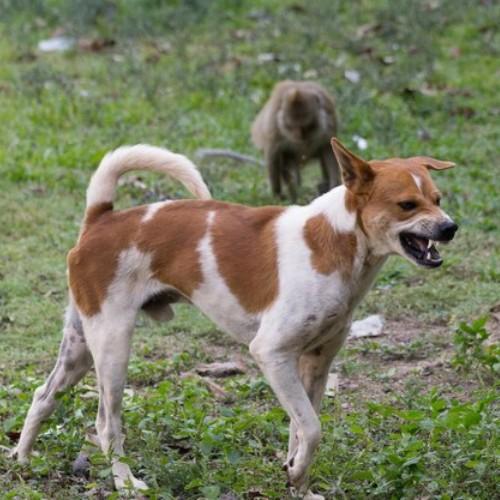Why Indian Stray Dog Breeds Deserve Love and Respect
Indian stray dog breeds are often overlooked in favor of foreign breeds, yet they are a treasure trove of resilience and charm. Commonly seen in urban and rural areas alike, these dogs have adapted to thrive in the diverse climates of India. Unfortunately, many people harbor misconceptions about them, viewing them as inferior to pedigreed breeds.
Why Focus on Indian Stray Dogs?
- They are a part of India’s natural ecosystem.
- Indie dogs are low-maintenance and highly adaptable.
- They have unique traits that make them excellent companions.
Origin and Evolution of Indian Stray Dogs
Indian stray dogs trace their lineage back thousands of years, sharing ancestry with pariah dogs and ancient domesticated breeds.
Key Points
- Historical Roots: Indie dogs are believed to be one of the oldest dog populations, evolving naturally without much human intervention.
- Adaptive Traits: Over generations, they have developed an impressive ability to adapt to harsh conditions, making them exceptionally resilient.
Physical Characteristics
Indian stray dog breeds are diverse in appearance, yet they share some common traits that set them apart.
Common Features
- Size: Medium-sized, typically weighing between 15-25 kilograms.
- Coat: Short, low-maintenance coat in colors like brown, black, white, or mixed.
- Distinctive Ears: Erect or semi-erect ears that enhance their alertness.



Temperament and Behavior
Indie dogs are known for their intelligence and adaptability. They are quick learners and highly intuitive, often forming deep bonds with humans.
Behavioral Traits Health Benefits
- Loyalty: Once they trust someone, their loyalty is unwavering.
- Social Nature: They are friendly with humans and other animals when treated well.
- Independence: Indie dogs are self-sufficient, making them ideal for busy households.
Health and Resilience
One of the standout features of Indian stray dogs is their natural robustness.
Health Benefits
- Hardy Constitution: Indie dogs are less prone to genetic diseases common in purebred dogs.
- Longer Lifespan: With proper care, they can live up to 15 years or more.
Challenges
- Exposure to harsh conditions can lead to malnutrition or injuries.
- Regular vaccinations and veterinary check-ups are essential.
Adopting Indian Stray Dogs
Choosing to adopt an Indian stray dog is both a noble and rewarding decision.
Benefits of Adoption
- Unique Bond: Adopted Indie dogs often show immense gratitude and loyalty.
- Cost-Effective: They require less grooming and maintenance compared to foreign breeds.
- Environmentally Friendly: Adopting stray dogs helps control the stray population humanely.
Myths vs. Realities
- Myth: Stray dogs are aggressive.
- Reality: They’re as friendly as any breed with proper training and love.
- Myth: Indie dogs aren’t good for families.
- Reality: They’re great with children and make excellent family pets.
Caring for Indie Dogs
Providing the right care ensures that Indie dogs lead happy, healthy lives.
Nutrition
- A balanced diet with proteins, carbohydrates, and fats.
- Incorporate fresh vegetables and meat or high-quality dog food.
Training and Socialization
- Early Training: Start with basic commands to build trust.
- Social Interaction: Encourage interaction with other pets and people to improve their temperament.
Conclusion
Indian stray dogs embody resilience, intelligence, and affection. By adopting and caring for these remarkable dogs, we not only save lives but also gain loyal and loving companions. Changing perceptions about Indie dogs is essential to ensuring their well-being and rightful place in society. Consider adopting an Indian stray dog today. Their love and loyalty will undoubtedly enrich your life while making a positive impact on the community.
Frequently Asked Questions (FAQs)
Q1. What makes Indian stray dog breeds special?
They are highly adaptable, intelligent, and often display unmatched loyalty to humans.
Q2. Are Indian stray dogs good pets?
Yes, with proper care and training, they can be affectionate, loyal, and protective companions.
Q3. Why do Indian stray dogs need more respect?
They often face neglect and hardships despite their resilience, intelligence, and ability to thrive in tough conditions.
Q4. Are Indian stray dog breeds healthier than purebred dogs?
Many have strong immune systems due to natural selection, making them less prone to genetic diseases.
Q5. Can Indian stray dogs be trained easily?
Yes, they are quick learners and respond well to positive reinforcement methods.




Post Comment